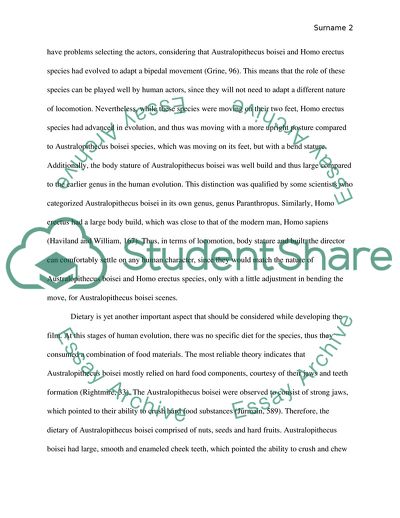Cite this document
(Anthropology: A film for Australopithecus boisei and Homo erectus Movie Review Example | Topics and Well Written Essays - 1250 words - 8, n.d.)
Anthropology: A film for Australopithecus boisei and Homo erectus Movie Review Example | Topics and Well Written Essays - 1250 words - 8. https://studentshare.org/anthropology/1795168-assignment
Anthropology: A film for Australopithecus boisei and Homo erectus Movie Review Example | Topics and Well Written Essays - 1250 words - 8. https://studentshare.org/anthropology/1795168-assignment
(Anthropology: A Film for Australopithecus Boisei and Homo Erectus Movie Review Example | Topics and Well Written Essays - 1250 Words - 8)
Anthropology: A Film for Australopithecus Boisei and Homo Erectus Movie Review Example | Topics and Well Written Essays - 1250 Words - 8. https://studentshare.org/anthropology/1795168-assignment.
Anthropology: A Film for Australopithecus Boisei and Homo Erectus Movie Review Example | Topics and Well Written Essays - 1250 Words - 8. https://studentshare.org/anthropology/1795168-assignment.
“Anthropology: A Film for Australopithecus Boisei and Homo Erectus Movie Review Example | Topics and Well Written Essays - 1250 Words - 8”. https://studentshare.org/anthropology/1795168-assignment.


